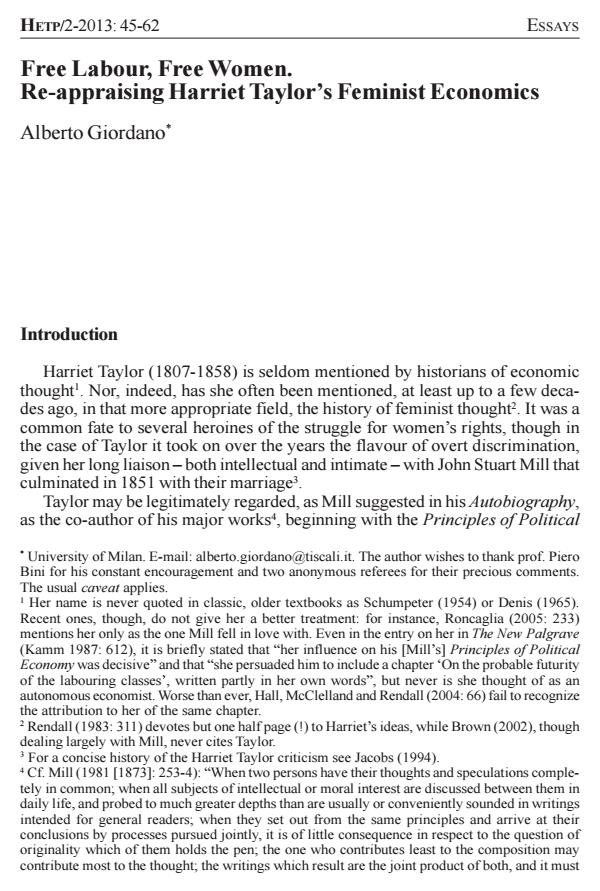Free Labour, Free Women. Re-appraising Harriet Taylor’s Feminist Economics
Titolo Rivista HISTORY OF ECONOMIC THOUGHT AND POLICY
Autori/Curatori Alberto Giordano
Anno di pubblicazione 2013 Fascicolo 2013/2
Lingua Inglese Numero pagine 18 P. 45-62 Dimensione file 72 KB
DOI 10.3280/SPE2013-002003
Il DOI è il codice a barre della proprietà intellettuale: per saperne di più
clicca qui
Qui sotto puoi vedere in anteprima la prima pagina di questo articolo.
Se questo articolo ti interessa, lo puoi acquistare (e scaricare in formato pdf) seguendo le facili indicazioni per acquistare il download credit. Acquista Download Credits per scaricare questo Articolo in formato PDF

FrancoAngeli è membro della Publishers International Linking Association, Inc (PILA)associazione indipendente e non profit per facilitare (attraverso i servizi tecnologici implementati da CrossRef.org) l’accesso degli studiosi ai contenuti digitali nelle pubblicazioni professionali e scientifiche
Harriet Taylor has been long forgotten as an economist and political philosopher, while merely remembered as John Stuart Mill’s friend and belatedly wife. Never was fate more unjust: we only need to recall that Taylor - whose liberal background soon led her to be fascinated by socialist theories and the evolution of labour movements - wrote chapter VII of the fourth book of the Principles of Political Economy, the well-known On the Probable Futurity of the Labouring Classes. Not to mention, moreover, her reflections on social mobility, women’s rights and female participation to the labour market, delivered in brilliant essays like Enfranchisement of Women. Detaching from mainstream Taylor’s scholarship, this paper tries to confer autonomy to her economic thought (compared to Mill’s) by suggesting that its original feature lies in the correspondence she established amid the liberation of the working classes and women’s enfranchisement, in order to place Taylor’s ideas in a more accurate intellectual perspective.
Parole chiave:Feminist economics, liberalism, socialism, labour market, women’s rights, Harriet Taylor Mill, John Stuart Mill
Jel codes:B12, B14, B31, B54, J71
Alberto Giordano, Free Labour, Free Women. Re-appraising Harriet Taylor’s Feminist Economics in "HISTORY OF ECONOMIC THOUGHT AND POLICY" 2/2013, pp 45-62, DOI: 10.3280/SPE2013-002003